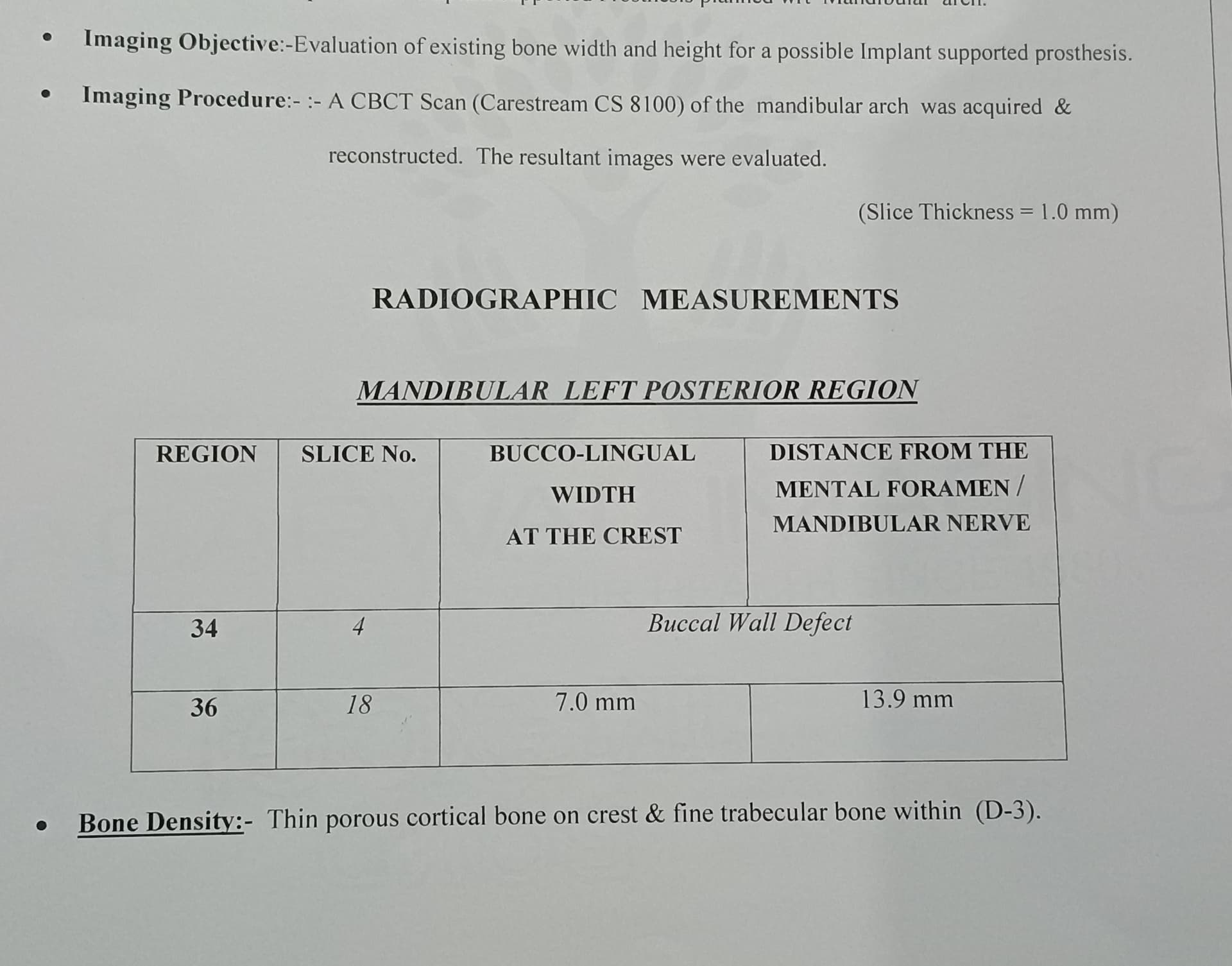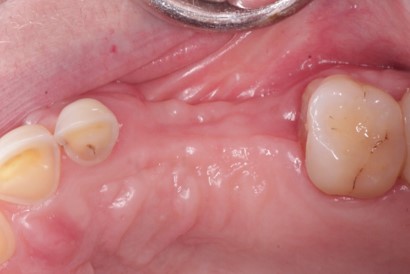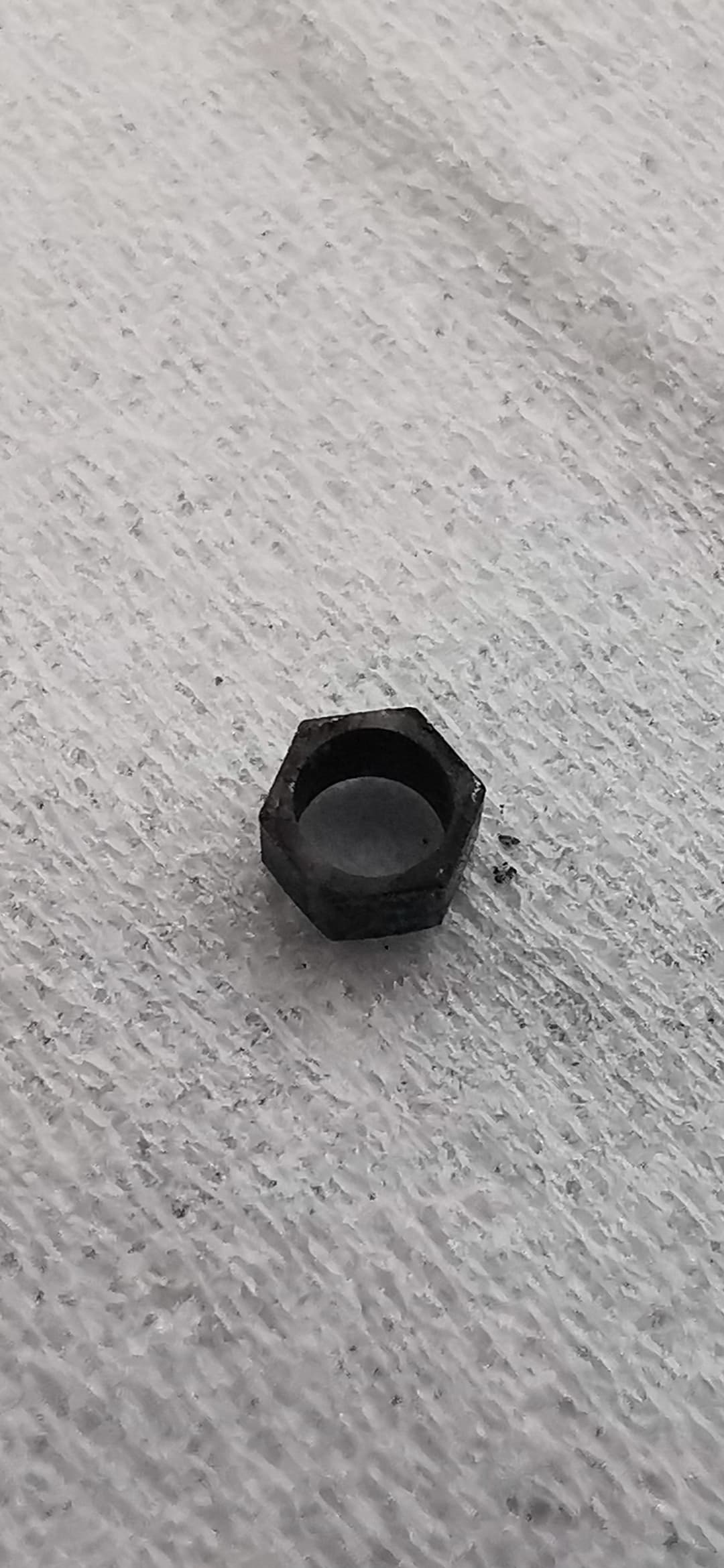Mesially Angulated Implants in Mandibular Overdenture: opinions?
This is my first post-extraction implant placement case. I have a 45 year old female patient. I have planned an overdenture supported by 5 interforaminal implants that I want to connect with a splinted bar. Despite the fact that this is my first overdenture case, I chose to place the implants immediately after extractions and grafted with Cerabone and Jason membrane. My concern is about the mesially angulated 2 implants in the 4th quadrant. Will I be able to fabricate a bar that would fit passively on all 5 implants? Is the angulation of those 2 implants a real problem? It is okay to use non-hex abutments for the bar? What is your opinion about my approach in this case ? Thank you!




12 Comments on Mesially Angulated Implants in Mandibular Overdenture: opinions?
New comments are currently closed for this post.
Dr. Gerald Rudick
10/16/2018
You did a terrific job!!! Congradulations…. The mesial angulation is minimal, and if you are worried that you may not get a passive fit....then by all means cut off the hexes....all the castings will be splinted together, so there is no need for an antirotation device.
Howard Abrahams
10/16/2018
Looks like no problem. Use multi unit abutments to bring platforms of implants to gingival level. You can use angled multi unit abutments if needed. Place multiunit abutments. Torque them down. Take a final impression. Make verification jig to check accuracy of impression. Do bite reg, wax try in. Lab will make bar of your choice - depending on available space which it looks like you have plenty. You may want to consider locators. Much easier.
Steve Hurst
10/16/2018
Nice case. If you decide to do a locator case in the future and you have an implant angled over 30 degrees consider TruAbutment. They can mill custom locators to correct angulation problems. A nice arrow to have in your quiver.
Timothy C Carter
10/16/2018
Not a problem..... Good job!!
Dr. Robert Wolanski
10/16/2018
I think you did a very nice job. Your AP spread and nearness to the mental foraminas is impressively close. The answer to your question will really be answered by your lab .
If you are doing your first case of implant placement at the time of extraction consider using a surgical guide or at least take an x-ray after making your fist osteotomy. Also remember that the existing extraction sockets can cause less than ideal osteotomies. Multiunit abutments come without the hexes and are the ones to use for your impressions especially if you are using an open tray technique which I believe is most accurate. If you are having issues with the bar fitting passively this may indicate the impression is not as passive as it needs to be but from your x-rays I think you will be OK. I personally just use 4 locators on the mandible and have pretty much 100% success. I do use 5 implants if the patient tells me they might transition to a fixed case.The maxilla is a different animal as we all know and I typically splint maxillary implants. I have had failures of single unit locators in the maxilla that I do not see in the mandible
keith goldstein
10/16/2018
TruAbutment does not have FDA on any of their locator parts nor 95% of their components. Very risky proposition. There are several options for you including off the shelf 15 degree angled locators or a multiunit (17 and 30 degree) where you can also place a multiunit locator ontop of these, non hex ti bases if you choose zirconia, or a direct to implant titanium bar. We can help you and your lab with all these solutions. And FDA approved and lifetime warranty on both the DESS component and 3rd party implant.
kewx
10/16/2018
No problemo!
Dennis Flanagan DDS MSc
10/16/2018
You could fabricate a fixed cantilevered complete denture. The cantilever can't be more than 12 mm. You may be able to just have a 9mm cantilever for adequate function.
Rick Stanley, DMD
10/16/2018
Great comments and guidance from all these docs. Take a look on Instagram at Midwestdentalarts as they are a lab and great resource and are doing these cases daily. They are local to us so they are typically in our local offices assisting in or doing the conversions and deliveries as needed.
Carlos Boudet, DDS
10/16/2018
Good job. A good lab should be able to give you a bar that fits passively over the implants if you give them a good fixture level impression. Engaging the hex of a couple of implants has helped me position the bar more easily . Measure your AP spread and be conservative in the cantilever that you design.
Dr Dale Gerke, BDS, BScDe
10/17/2018
All the above comments are noteworthy and applicable. I think it is wonderful to have so many excellent and helpful comments being passed on to someone wanting to know more.
I would suggest that if you wanted parallel implants (it seems you did from your CADCAM workup) then a surgical guide would help (I find you generally get within 0.2-0.5 mm of predicted position).
Nevertheless I think you did a good job and the slightly angulated implants should not present a problem (and if they do then you can use an appropriate “intermediate†abutment to allow for the path of insertion).
On the matter of intermediate abutments (there are various terms/names for these depending on the system you use), I would point out that sometimes the bar will need to be removed to allow maintenance (eg replacing the retainers or oral hygiene maintenance). If the implants are deep so that there is a considerable length of soft tissue between the implant and the ridge crest, then removing and replacing the bar can be tricky and painful for the patient – especially if the soft tissue “collapses†over the fixture. Because of this, I now use long collar intermediate abutments to raise the height of the platform so when placing the bar there is no painful gingival pressure. This makes it easier for the dentist and the patient.
I also mention that I initially used locators for all my bar retained denture patients. However I have noticed that sometimes the locators wear quite quickly (for reasons I have not been able to accurately determine) and this then requires replacing the locators because there is a consequent loss of retention. This replacement can be time consuming, expensive and inconvenient for the patient. Therefore in some cases, I have started using CADCAM designed milled bars with mini “dolder†retaining bars milled into the bar. The appropriate retainer inserts are then placed into the denture appropriately. To date I have found this to be an excellent retainer system which most importantly shows no sign of wear. You might want to investigate this option.
scott berdelle
10/17/2018
Question?
Is there pathology above # 14
If there is pathology are you treatment planning that along with the lower.
I agree with one of the previous post. Lower overdentures are great with 4 Implants and locator attatchments and no bars.
Uppers require bars.


















